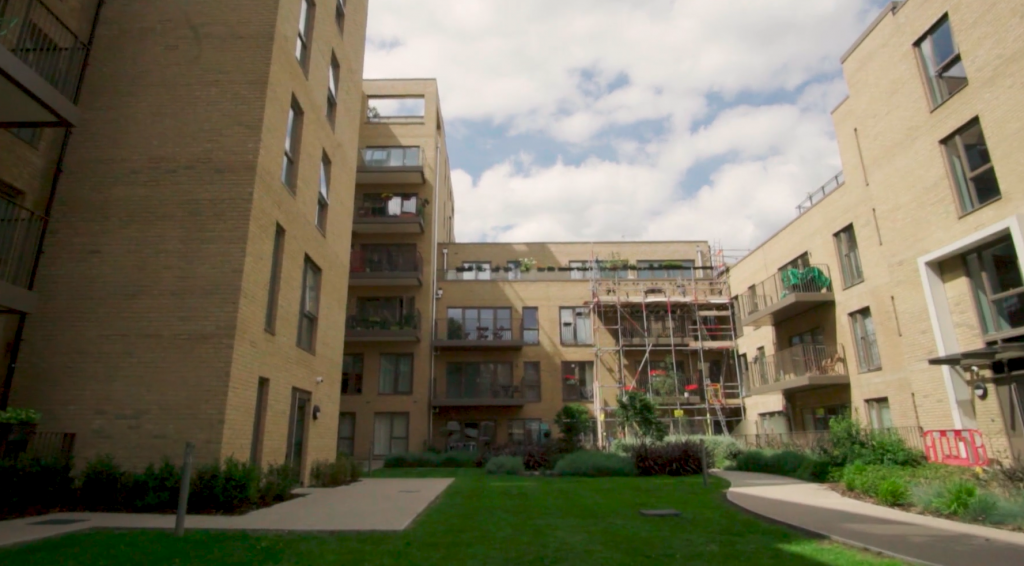Subscribe to our joint NEWSLETTER for
EUTROPIAN &
COOPERATIVE CITY MAGAZINE

Developed and carried out by Eutropian and Platoniq, the Open Heritage Training Programme was created with the aim to address urban professionals involved in issues related to heritage protection and adaptive reuse. Abandoned or underused sites pose a significant challenge to both the public and private sectors but also represent major opportunities. This is why we have developed training to help those interested in repurposing empty or underused buildings with symbolic or practical heritage significance.
Developed as part of the Open Heritage project and funded through the Horizon 2020 grant scheme of the EU, the OH Training builds on the expansive knowledge base of the project, generated since its launch in 2018, notably, capitalizing on the 16 Observatory Case studies that were developed in detail at earlier stages of the project.
The Observatory Cases look at how various (e.g. financial, governance, territorial) aspects of cultural heritage reuse come together to form successful initiatives in various European local contexts.
The Open Heritage Training on Adaptive Heritage Reuse was created first, in an online classroom setting hosted on Zoom and utilizing MIRO interactive boards. The training sessions were held on a bi-weekly basis, with the following five modules: (1) Heritage, (2) Governance, (3) Financial and Territorial Impacts of aspects of adoptive heritage reuse. The final module brought (5) Integrate the above-presented aspects into one comprehensive model. As a follow-up to the online training modules.

Module 1 of the training looked at the Heritage aspect of adaptive heritage reuse, building on the project’s conceptualisation of cultural heritage and heritage sites. The Open Heritage project works with an open definition of heritage, not limited to listed assets but referring to buildings, complexes and spaces that have a symbolic or practical significance for local or trans-local heritage communities.
The goal of this module was to provide a fundamental explanation of what we understand as cultural heritage and to lay the foundation of the training. The module introduced two Observatory Case studies, the London CLT and Convento Delle Cappuccinelle which are both notable examples of adaptive heritage reuse projects with a strong emphasis on the physical aspect of such projects.
The London CLT (Community Land Trust) is a residential area and community situated in one of the inner districts of London, in a building complex which was originally built to be a psychiatric hospital in 1848. Renovated and managed through a community land trust model, this case is a great example of how an abandoned heritage site with a lot of potential can realize that potential through it being repurposed as affordable housing, marginally easing the housing crisis experienced by residents of London. The core of the building complex remains the same to this day, yet it now serves a very different function reacting to the needs of local communities.


Convento Delle Cappuccinelle is a civic and community space where ample non-formal and formal groups of citizens operate. It initially was built as a convent in Naples in 1585, later having a number of different uses. Notably, for many decades it operated as a juvenile detention facility. The building complex was partially destroyed by an earthquake in 1980 and was abandoned for a number of years before being occupied by Scacco Matto from 2015. After the occupation started, the heritage site became, first unofficially but later recognised by the municipality, a community centre where local residents and groups benefit from the renewed purpose of the building.
Abandoned or underused heritage sites pose both opportunities and challenges for owners and potential beneficiaries. The intrinsic and financial value of cultural heritage sites significantly reduce due to abandonment or underuse, by contrast, if a building with heritage significance is used to its full potential, it provides inmensurable value to its beneficiaries which we understand to be the heritage community. There are a countless examples and good practices of adaptive heritage reuse projects across Europe only few of which have been processed as part of the Open Heritage project. It is our shared responsibility to look after the cultural heritage around us and the Observatory Case studies offer useful and practical advice on how to look after and use the full potential of these buildings to benefit local communities.
| Cookie | Duration | Description |
|---|---|---|
| cookielawinfo-checkbox-analytics | 11 months | This cookie is set by GDPR Cookie Consent plugin. The cookie is used to store the user consent for the cookies in the category "Analytics". |
| cookielawinfo-checkbox-functional | 11 months | The cookie is set by GDPR cookie consent to record the user consent for the cookies in the category "Functional". |
| cookielawinfo-checkbox-necessary | 11 months | This cookie is set by GDPR Cookie Consent plugin. The cookies is used to store the user consent for the cookies in the category "Necessary". |
| cookielawinfo-checkbox-others | 11 months | This cookie is set by GDPR Cookie Consent plugin. The cookie is used to store the user consent for the cookies in the category "Other. |
| cookielawinfo-checkbox-performance | 11 months | This cookie is set by GDPR Cookie Consent plugin. The cookie is used to store the user consent for the cookies in the category "Performance". |
| viewed_cookie_policy | 11 months | The cookie is set by the GDPR Cookie Consent plugin and is used to store whether or not user has consented to the use of cookies. It does not store any personal data. |
